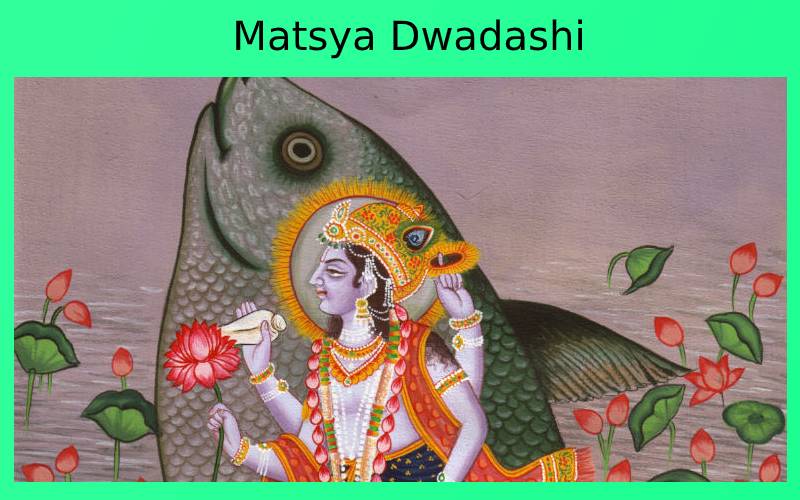
The festival of MATSYA DWADHASHI is celebrated on the birth anniversary of MATSYA. MATSYA AVTAR is the first among the DASHAVATHAR (ten incarnations) of LORD VISHNU.
The accent of this Avtar is aptly portrayed by JAYADEVA GOSWAMI (a 12th century poet) in the introductory shloka (Dashavatara stotra) of his poetical composition GITA GOVINDAM (Ashtapadi),
Pralayapayodhi jale dhrtavaan asi vedham
Vihitha vaheetra charithram akhetham
Keshava dhrta Meena sareera
Jaya jagadheesha harey.
O! Keshava, O! Lord of the Universe, O! Lord Hari, the one who has incarnated as the FISh (MATSYA). All glories to You! During the time of the great deluge (PRALAYAM) you assumed the form of a FISH and effortlessly resuscitated the Vedas from the bottom of the ocean.
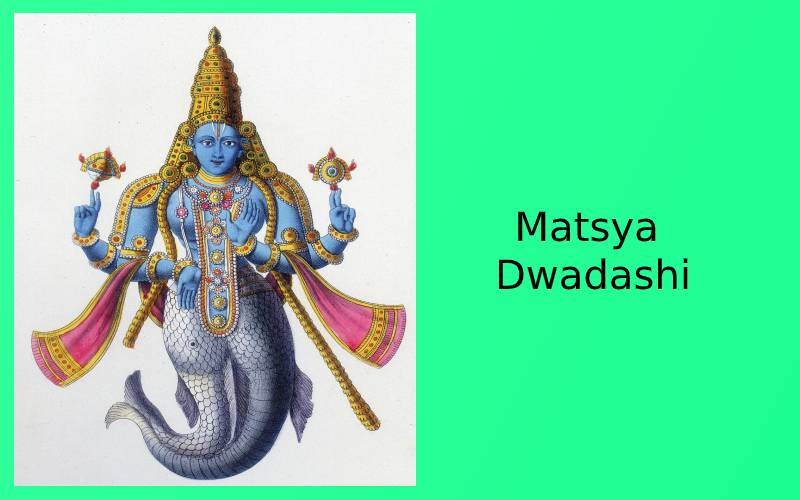
During the reign of Chakshusha Manu, there was a pious and great ruler named SATYAVRATA. To obtain the blessings of Lord Vishnu, he took up fasting and subsisted only by drinking water. One morning while performing his daily rituals in the KRITAMALA river and offering oblations with water in his palms, he found a tiny fish. The fish sought refuge and asked to be placed in a safe haven. The King put the fish in his kamandala, and took him to his palace. He kept him in a small container.
The Lord wanted to show His potency to the King and expanded in size. The fish enlarged each day and the king had to transfer the fish successively into larger vessels. The fish outgrew the well and the lake, hence the king finally left the fish in the ocean. Now the king realized that the fish was, LORD VISHNU.
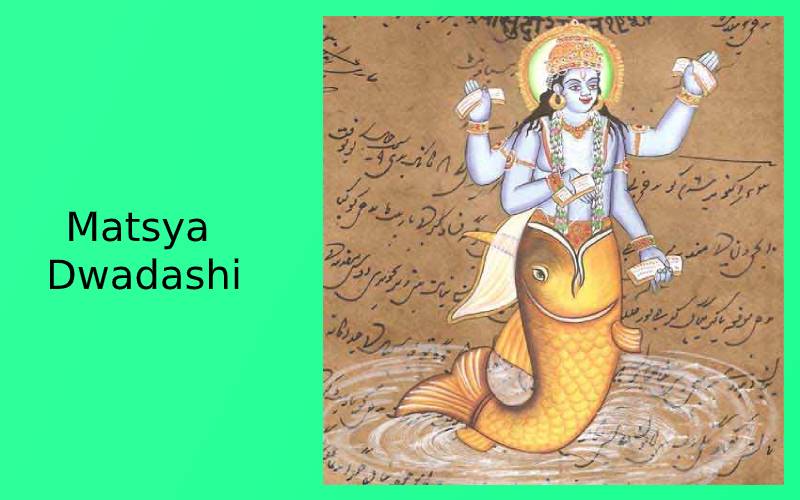
The Lord warned the king about the forthcoming great deluge which would inundate the world. The Lord instructed the king to construct a huge ship. He also told the king and his queen SHATARUPA to choose all genera of the choicest seeds, plants and representatives of all animal species, the SAPTHA RISHIS (seven sages) and embark on the ship. Once the king, queen, rishis, and the selected flora and fauna were aboard, MATSYA, the gigantic fish with a single horn appeared. He tied the ship to His horn with the serpent VASUKI and swam far away from the floods. Throughout the voyage the Lord discoursed the king on the gamut of sacred literature. The Fish dragged the ship to a secure place. Once the floods subsided, all the seeds were scattered on the floor and all the representatives of the animal kingdom was left on earth for procreation. The couple would be instrumental in conceiving humans once again. From there, the creation sprang forth once again.
At the end of the previous KALPA, (a kalpa tantamounts to 4.32 billion years), a rakshasha named HAYAGRIVA took away the VEDAS from BRAHMA and hid the vedas under the sea bed. Hence at the beginning of the period of Swayambhuva Manu, LORD VISHNU took the form of a fish, and retrieved the Vedas.
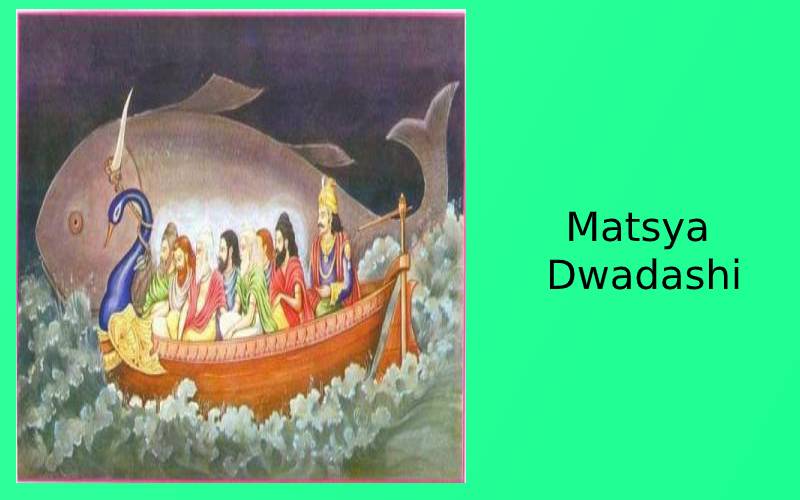
Thus, Lord Vishnu, the Omnipotent and Supreme Personality took the form of an ordinary fish, to retrieve the Vedas from Hayagriva and also to protect the earth from great deluge. The NAGALAPURAM MATSYA NARAYANA SWAMY TEMPLE (Veda Narayana Temple), in Chittoor district in Andhra Pradesh is a famous temple where Lord Vishnu presides in His MATSYA FORM. During the SURYA POOJA, the sun rays fall on the Lord, at sunset (6pm to 6.15pm) for 3 days in a year. It is a mystery how the sun rays from the entrance can sneak into the deity in the sanctum which is 600ft away.
MATSYA DWADHASHI is celebrated in the glory of MATSYA AVTAAR. It is observed on the 12th day in Shukla Paksha (growing moon phase) of MAGASHIRSHA month (Maargazhi)
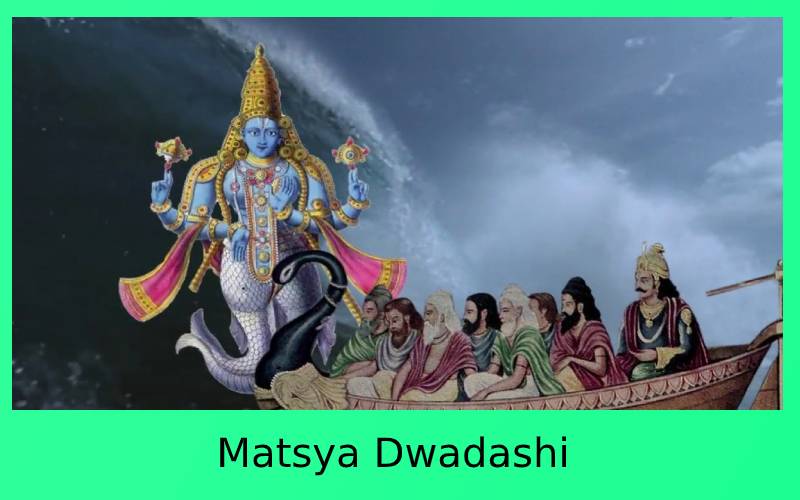
POOJA VIDHI:
* The devotees arise early in the morning, take a holy bath, and wear clean white attire.
* They clean and adorn their pooja room with flowers and garlands.
* The essentials for pooja like Kumkum, Chandan, incense sticks, diyas, and fruits are procured.
* The picture of lord Vishnu in the MATSYA form is decorated with lotus flowers.
* Shodasopachaara (16 steps in the performance of POOJA on special occasions) is offered to
Lord Vishnu in his MATSYA form.
* Fasting is also observed.
* The puja is performed in the evening, after which the fasting is concluded by partaking the prasad.
* The devotees also offer charity to brahmins and distribute food and clothes to the needy which bestows great merits.
* The devotees also feed poha and food for the fishes in the lakes and other water bodies.
* The devotees who observe this Vrat, acquire great benefits such as, good health, prosperity, and success.
B.Yamuna is a musician cum teacher. She enjoys singing and teaching. Yamuna and her team have given group performances in number of places. She is a graduate of English Literature and qualified various other courses in the field of language teaching.
NEXT ARTICLE

Subramania Bharati, often referred to as Mahakavi Bharati (Great Poet Bharati), was a revolutionary poet, journalist, and social reformer whose words...
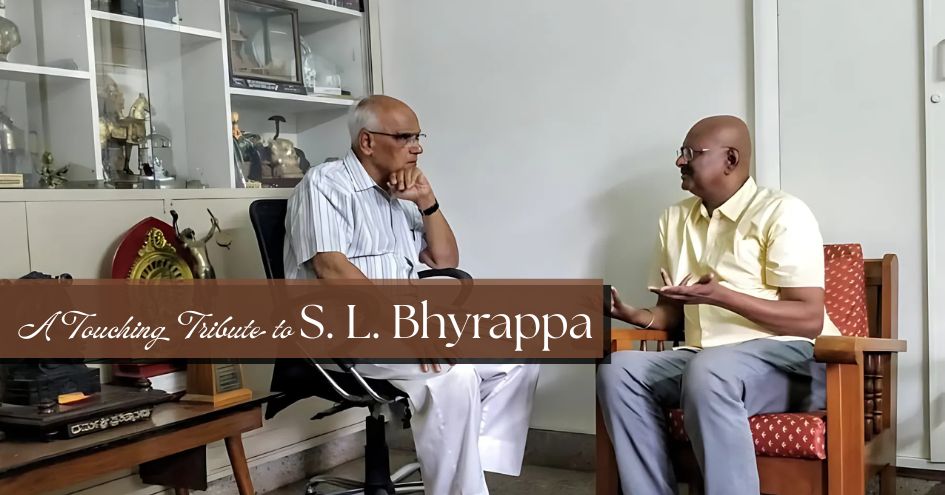
Some writers tell stories, and then there are those rare souls who hold up a mirror to our civilisation, our history, and our innermost selves. Sri Sa...
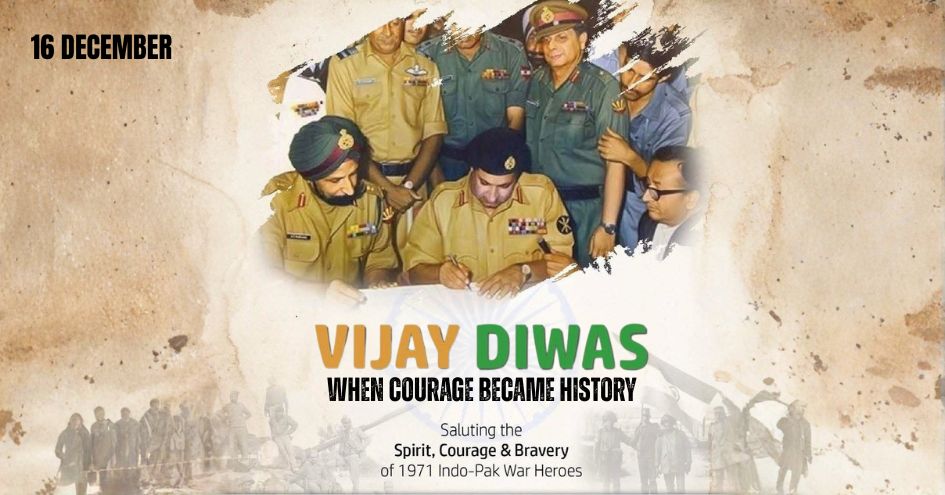
As the Tricolour rises high on 16 December, Vijay Diwas calls out to the conscience of the nation.It reminds us of a timeless truth:Freedom is earned,...